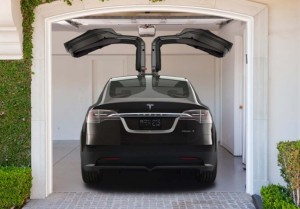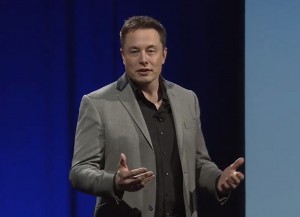Tesla Motors has gotten an even bigger cash cushion than it anticipated. Worried that its cash horde was dwindling due to the unexpectedly high cost of developing the new Model X battery SUV, the California maker had hoped to raise about $500 million through a new stock offering.
But as underwriters wrap up their efforts they have announced that Tesla actually brought in $738.3 million, or nearly 50% more than originally anticipated. That said, the company might have generated even more cash had its stock not taken a bit of a tumble in recent months.
The secondary stock offering came in the wake of a second-quarter earnings report that revealed the carmaker had only $1.5 billion in cash, a 57% year-over-year decline. It has been burning through cash due to what CEO Elon Musk acknowledged was an unexpectedly “challenging” development program for the long-delayed Model X.
That battery-electric SUV is now scheduled to reach market before the end of this quarter, but Tesla engineers – and accountants – can’t relax. The maker faces a task that could prove even more daunting. It now has to focus on the development of the eagerly anticipated Model III, its first mainstream electric vehicle which is due to market in about three years. Tesla CEO Musk has promised that this product could help boost sales to as much as 500,000 annually, a tenfold increase from current volume.
(British project could eliminate range anxiety by building chargers into roads. Click Here for the story.)
Tesla announced its planned stock offering on August 13, calling for the sale of 2.1 million shares, underwriters expecting to purchase an additional 315,000 shares. That was quickly increased to a combined 3.1 million shares.
The stock sale went off at a price of $242 a share. That’s about where the numbers closed on Thursday, through Tesla’s numbers tumbled sharply as the market opened today. Even at the $242 figure, those shares were a relative bargain compared to the maker’s 52-week high of $291.42. Had Tesla been able to get that much, the offering would have generated about $150 million in additional cash.
Nonetheless, the latest sale will help shore things up as the Model X gets into production. Tesla is about two years behind on the project which was delayed, in part, due to the unexpectedly difficult development effort. Early on, management had thought they could largely re-use most key components from the Model S sedan. But Musk conceded during a conference call with journalists and investors that most major parts are now unique to the electric SUV.
(Tesla disappoints with 2nd-quarter earnings news. Click Here to find out why.)
Complicating matters, Musk also revealed that sales for all of 2015 will likely come in a bit short of the original target, around 50,000 vehicles total. He also forecast that the company will be producing about 1,800 battery sedans and SUVs a week in 2016, slightly short of the current factory capacity of 2,000 vehicles. That nonetheless could push its volumes closer to the 100,000 mark.
Whether there’s demand to support that forecast is uncertain. A new Harris Poll found that there has been no growth in consumer interest in electric vehicles over the last two years. And with fuel prices holding relatively low compared to the $4-a-gallon early 2014 peak, sales of battery-based models, overall, have taken a slide so far this year.
(Tesla could dominate ride-share business with autonomous battery cars. Click Herefor the story.)



You can bet that much of this money will be a quick flip to cash in on the gullible.